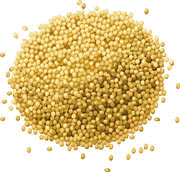International Sorghum and Millet Collaborative Research Support Program (INTSORMIL CRSP)
Date of this Version
7-28-2008
Document Type
Article
Citation
INTSORMIL Impact (July 28, 2008)
Abstract
In a May 19, 2008 interview on the Voice of America INTSORMIL scientist Mitch Tuinstra, a Purdue University sorghum breeder, reported on sorghum seed that he and his colleagues have produced that can protect sorghum crops from a weed called Striga. Although their target weed has a pleasant looking purple flower it’s action is far from pleasant. Striga causes six or seven billion dollars in crop damage every year to African grain sorghum.
Striga, called ‘witchweed’ in Africa, is parasitic on sorghum, stealing water and nutrients from sorghum roots. Witchweed has an unusual quality, it requires chemical signals from sorghum seeds to grow. The minute witchweed seeds (less than 0.5 mm) can lie in the soil for years and begin to grow only when they receive the needed chemical signals provided by the presence of sorghum roots. Thus, a fallow period does not control witchweed.
Tuinstra warns that if you see witchweed on your farm, you are in trouble because the plant can completely destroy vast areas of sorghum, is very difficult to remove and it often strikes farmers who work the poorest land. This means disaster for people who already lack enough to eat. To deal with witchweed, researchers developed special sorghum-seed genes which allow these seeds to accept certain herbicides without being harmed and these herbicides on the sorghum seed kill the witchweed as the sorghum grows. Greenhouse tests of the seeds in the Netherlands, and similar studies in sorghum fields in Mali and Niger, showed the treatment to be effective, low cost and safe to farmers.


